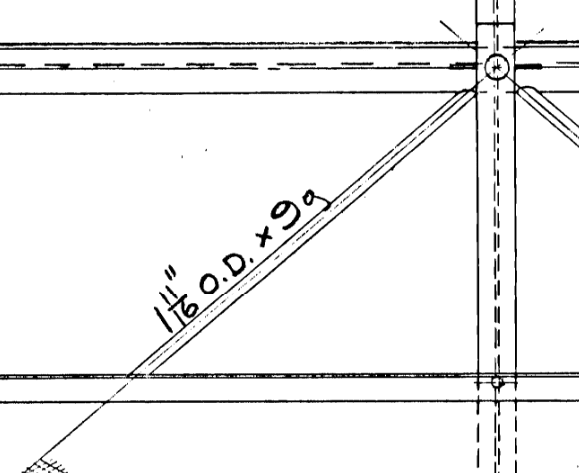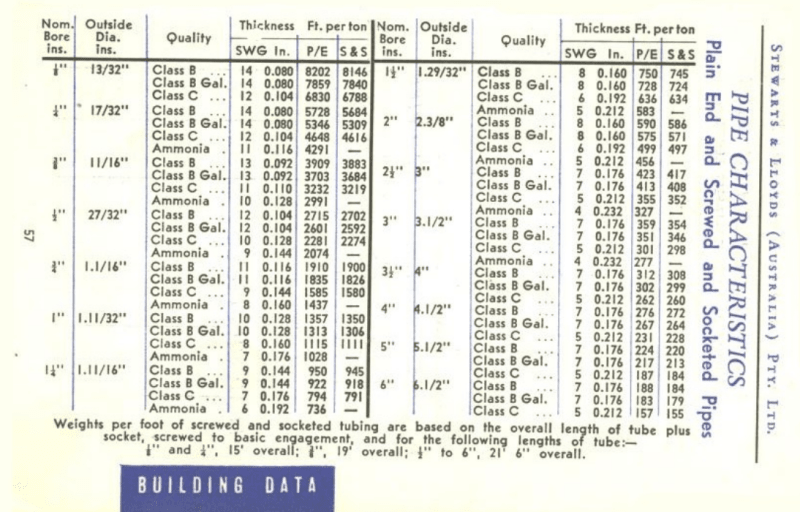ifitsmoving
Structural
Hi,
Does anyone have reference material for historic grades of steel tubing in Australia? I am looking at a project involving a truss structure built out of tubing, and all I have is the following information:
* OD and Thickness listed as what I believe is a gauge. E.g. "1 11/16" OD 9g"
* The drawing lists material as being grade 13 or grade 20. It's painted, so can't tell what it is for sure, but believe it's mild steel based on the rest of the site where I have seen similar tubes that have rusted.
* Drawings are dated March 1958.
* Designed by Moore Crane / Malcolm & Moore Industries, but some drawings also call up Stewarts & Lloyds of Newcastle NSW.


Does anyone know what the gauge means in terms of real thickness, and / or have information on what the material is?
I've checked Standards Australia's publication MP84, but the first Australian Standard that covers hollow sections dates to 1965, so it's not a structural grade. It could be a piping steel, or something American / British?
Thanks for any help.
Does anyone have reference material for historic grades of steel tubing in Australia? I am looking at a project involving a truss structure built out of tubing, and all I have is the following information:
* OD and Thickness listed as what I believe is a gauge. E.g. "1 11/16" OD 9g"
* The drawing lists material as being grade 13 or grade 20. It's painted, so can't tell what it is for sure, but believe it's mild steel based on the rest of the site where I have seen similar tubes that have rusted.
* Drawings are dated March 1958.
* Designed by Moore Crane / Malcolm & Moore Industries, but some drawings also call up Stewarts & Lloyds of Newcastle NSW.


Does anyone know what the gauge means in terms of real thickness, and / or have information on what the material is?
I've checked Standards Australia's publication MP84, but the first Australian Standard that covers hollow sections dates to 1965, so it's not a structural grade. It could be a piping steel, or something American / British?
Thanks for any help.

